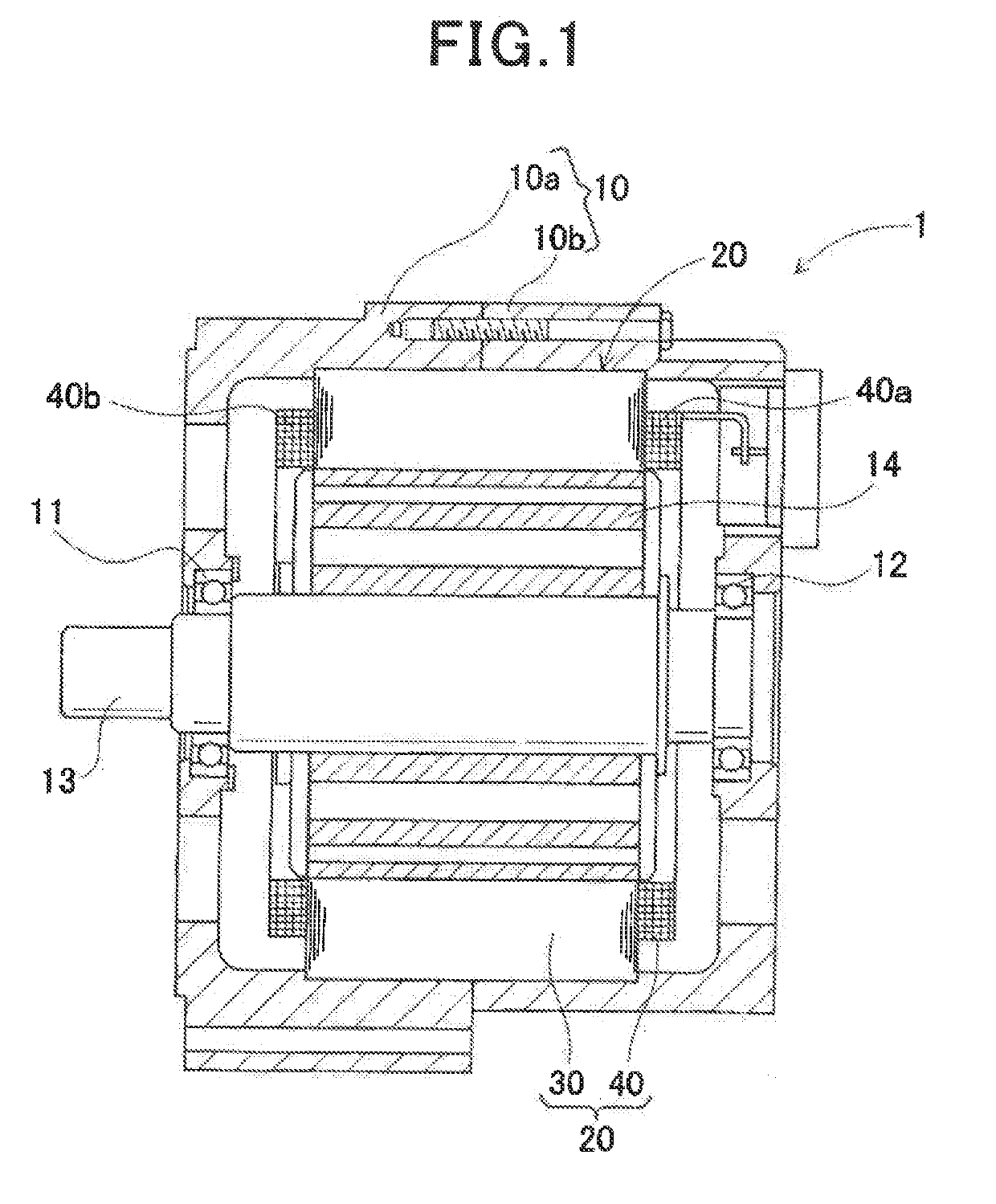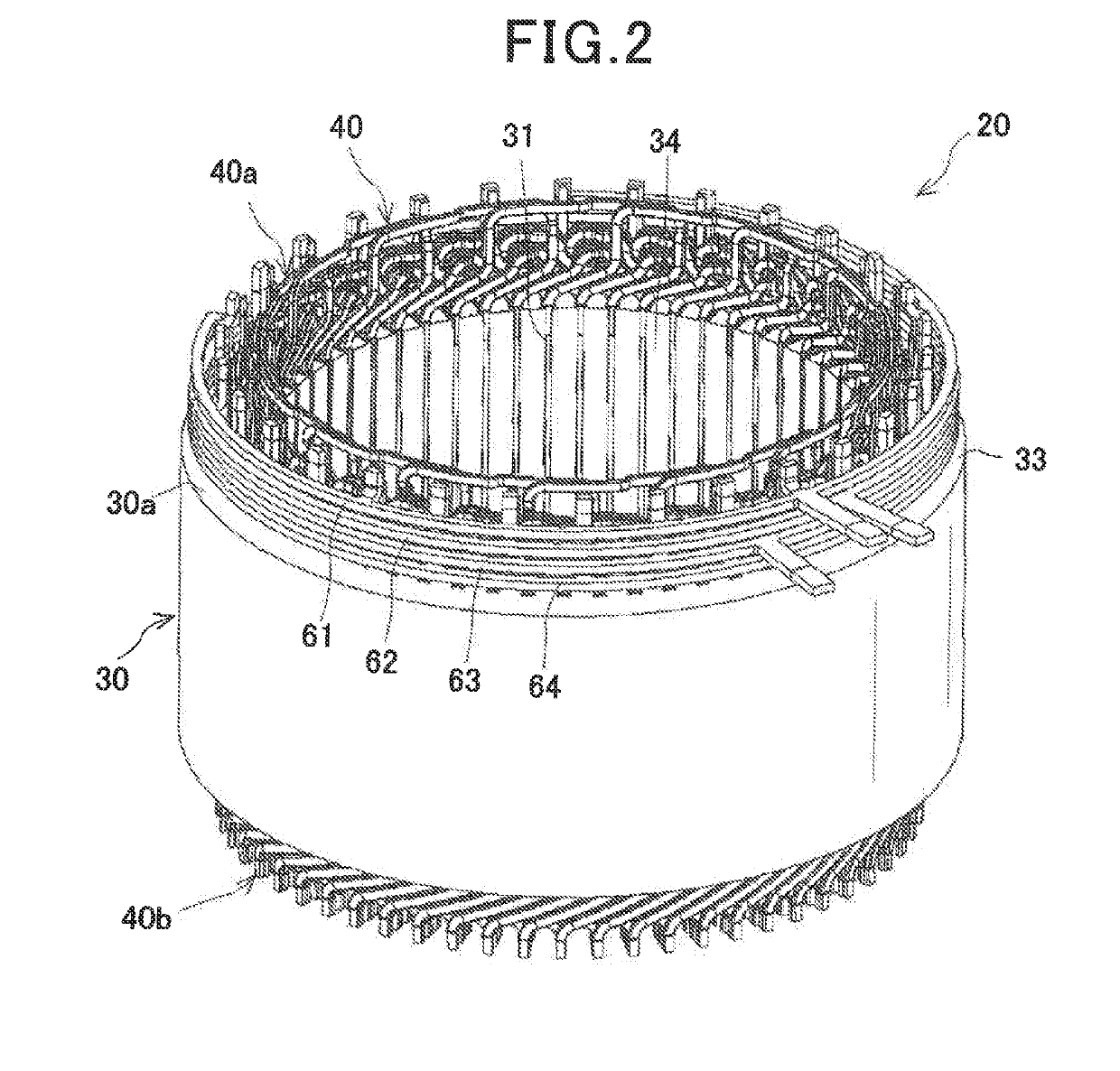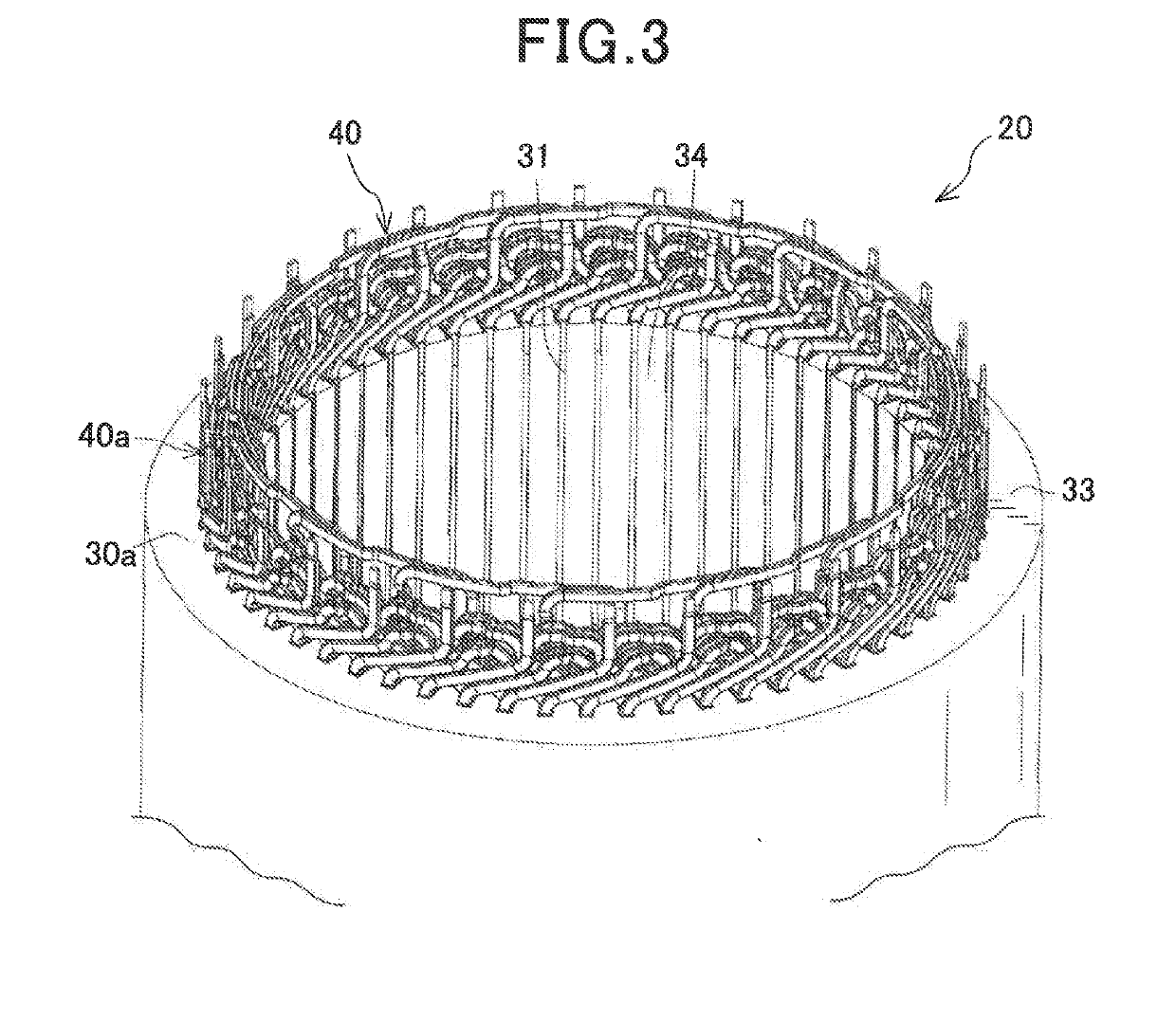Stator for rotating electric machine
a technology of rotating electric machines and stators, which is applied in the direction of electrical apparatus, windings insulation materials, dynamo-electric machines, etc., can solve the problems of short distance between each circumferentially-adjacent pair of slots of the stator core, insulation failure, etc., to prevent the occurrence of ground faults, reduce the potential difference to ground, and improve the insulation properties of the stator
- Summary
- Abstract
- Description
- Claims
- Application Information
AI Technical Summary
Benefits of technology
Problems solved by technology
Method used
Image
Examples
first embodiment
[0057]FIG. 1 shows the overall configuration of a rotating electric machine 1 according to a first embodiment.
[0058]The rotating electric machine 1 is designed to be used in a motor vehicle, such as a passenger car or truck, as an electric motor.
[0059]As shown in FIG. 1, the rotating electric machine 1 includes a housing 10, a rotor 14 and a stator 20. The housing 10 is comprised of a pair of cup-shaped housing pieces 10a and 10b which are jointed together at the open ends thereof. The housing 10 has a pair of bearings 11 and 12 mounted therein, via which a rotating shaft 13 is rotatably supported by the housing 10. The rotor 14 is received in the housing 10 and fixed on the rotating shaft 13. The stator 20 is fixed in the housing 10 so as to surround the radially outer periphery of the rotor 14.
[0060]The rotor 14 has a plurality of permanent magnets embedded at predetermined positions therein. The permanent magnets form a plurality of magnetic poles on the radially outer periphery ...
second embodiment
[0172]A stator 20A according to a second embodiment has almost the same structure as the stator 20 according to the first embodiment. Accordingly, only the differences therebetween will be described hereinafter.
[0173]As shown in FIGS. 36 and 37, in the stator 20A according to the present embodiment, the U-phase, V-phase, W-phase and neutral busbars 61-64 are integrated by a resin member 66 into one piece. In other words, the U-phase, V-phase, W-phase and neutral busbars 61-64 and the resin member 66 together form one integrated body.
[0174]In addition, as in the first embodiment, the U-phase, V-phase, W-phase and neutral busbars 61-64 are located axially outside the stator core 30 and radially outside the first coil end part 40a of the stator coil 40. The U-phase, V-phase, W-phase and neutral busbars 61-64 are axially aligned with each other. Among the U-phase, V-phase, W-phase and neutral busbars 61-64, the neutral busbar 64, which has the lowest electric potential, is located close...
first modification
[First Modification]
[0179]In this modification, as shown in FIG. 38, the resin member 66 is formed by multi-phase (or multi-shot) molding to include three segments 66A, 66B and 66B.
[0180]Moreover, a boundary between the segments 66A and 66B of the resin member 66 is located on that side surface of the resin member 66 which faces and abuts the first axial end face 30a of the stator core 30.
[0181]With the above arrangement, a ground fault may occur between the busbars 61-64 and the stator core 30 through the boundary between the segments 66A and 66B of the resin member 66. However, in the present modification, among the busbars 61-64, the neutral busbar 64, which has the lowest electric potential, is located closest to the stator core 30. Consequently, though the boundary between the segments 66A and 66B of the resin member 66 is located on the side surface of the resin member 66, it is still possible to reliably prevent a ground fault from occurring between the busbars 61-64 and the ...
PUM
 Login to View More
Login to View More Abstract
Description
Claims
Application Information
 Login to View More
Login to View More - R&D
- Intellectual Property
- Life Sciences
- Materials
- Tech Scout
- Unparalleled Data Quality
- Higher Quality Content
- 60% Fewer Hallucinations
Browse by: Latest US Patents, China's latest patents, Technical Efficacy Thesaurus, Application Domain, Technology Topic, Popular Technical Reports.
© 2025 PatSnap. All rights reserved.Legal|Privacy policy|Modern Slavery Act Transparency Statement|Sitemap|About US| Contact US: help@patsnap.com



